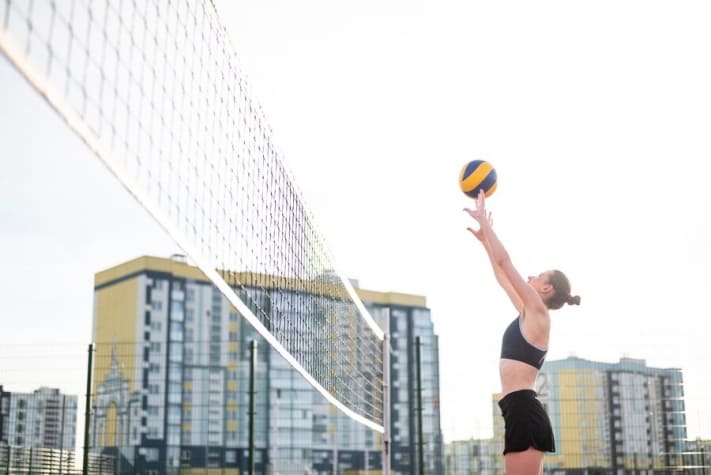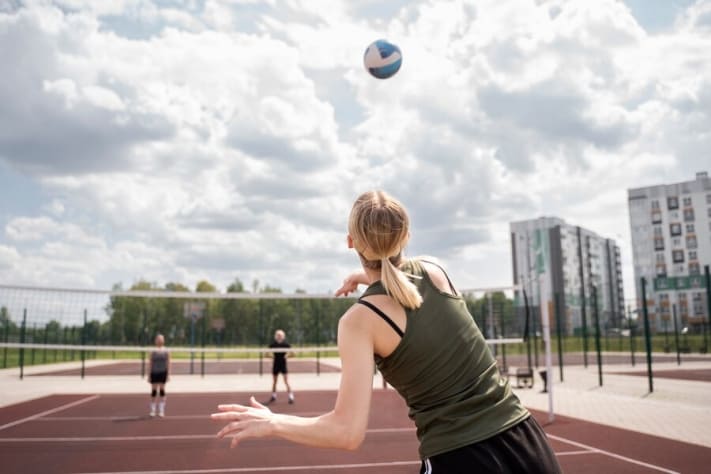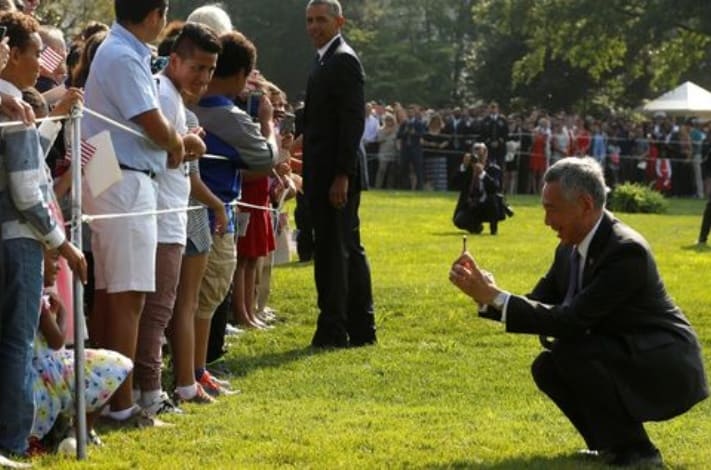Volleyball is an exciting and dynamic game known as the “fast-paced chess of sports.” It calls for the ideal fusion of athletic skill and tactical awareness. In the middle of all the smashes and serves, it is key for you to recognize the “side out” idea.
I have loved playing and watching volleyball since I was a child. I had the chance to play for our school till my senior year of college. Side out was one of the terms I used to struggle to get the hang of, which cost us some games. Studies confirm that side-out volleyball was common in the 1990s during the changing of game rules.
It is essential to understand the meaning and implications of a side out to enjoy the beauty of volleyball fully. In this blog, we’ll go into great detail to analyze the meaning of this volleyball term. I will also help you understand its meaning and function in the game.
The Basics: What Is Side Out in Volleyball?
Side out in volleyball represents a critical juncture in the match. It marks a change in possession and acts as a critical game-changing phase. One team can inch closer to victory when they successfully side out, which gives them back possession of the ball and the chance to score points.
Breaking It Down: How Does It Happen?
When the receiving team wins a rally and asserts its right to serve, it is called a side-out. They have to prevent the serving team from scoring a point to accomplish this. By essentially converting defense into offensive, the receiving team “sides out” their opponents.
The Path to a Side Out
To have a better understanding, let us dissect the events that result in a side-out. It’s similar to the most vital moment in the game when players make split-second choices that determine who wins.
Imagine it as the climax of volleyball, when the intensity on the court reaches new heights and demonstrates how the sport combines quick reflexes with cunning strategy. The thrill of the game increases as the receiving team defends against the attacks of the serving team.
- Serve
One team serves the ball to the other to start the game. To prevent the ball from touching the ground on their side, the receiving team’s primary goal is to receive the serve precisely and set up their offense.
- Rally
Both teams try to get points by delivering the ball over the net and into the other team’s court. They do this through a series of passes, sets, and attacks once the ball is in play. The actual action starts to happen at this point. 
- Side Out Opportunity
The receiving team’s objectives are to hold off the opposition, repel their attacks, and eventually swing the balance in their favor. They obtain a side out when they accomplish this.
- Transition to Offense
The receiving team gets the chance to go from defense to offense after obtaining a side out. This implies that they can organize their offensive, hoping to win the game and score points.
- The Scoreboard
A side-out could result in a point being posted on the scoreboard right away or not. But it also signifies a significant change in the game’s momentum and control. As a result, the receiving team can score on their next offensive play.
The Strategic Importance of a Side Out
On the side of volleyball definition, obtaining it is strategically crucial and cannot be emphasized enough. This key moment in the game affects more than simply who has possession; it also impacts how a match plays out as a whole. A side out can dramatically shift the balance of power in favor of the receiving team. 
This may undermine the confidence of the serving team and elevate the spirits of the victorious side. It also provides a tactical advantage because the side in possession may choose the play’s tempo and style. This strategy gives them the freedom to execute plays and take advantage of their opponent’s deficiencies.
A side out is also a psychological trick that can make the other team doubt and be uncertain, which could have an impact on their performance. Even while it might not result in a point right away, it puts the receiving side in a scoring position and dramatically impacts the game’s fate.
Methods for Getting a Side Out
After understanding the question, “What is a side out in volleyball?” How can you use it to your advantage? Reaching a side out demands expertise, collaboration, and a calculated approach; it doesn’t just happen. The following are some essential tactics used by teams to secure this pivotal moment that could change the game:
- Strong Defense
Any effective side-out comes from strong defensive play. For teams to stop the opposition from scoring, they must concentrate on precise passing, strong blocking, and skillful digging. 
- Quick Transitions
It’s critical to go quickly from defense to offensive. After a successful dig or block, players must be ready to launch an attack.
- Communication
As a team sport, volleyball places a high value on communication. Players who communicate well are positioned correctly, able to predict plays, and able to react appropriately. On the court, effective communication is essential for coordinating movements, signaling moves, and building a strong team dynamic — all of which help a team successfully execute a side out.
- Adaptability
Having the flexibility to adapt is another important aspect of standing out. Success depends on one’s ability to modify their game plan in response to the tactics of the opposition. Teams need to be alert, spot holes in the opposition’s defense, and take advantage of them strategically. This approach will show that they can adapt and change course quickly in response to the game’s unpredictable flow
- Mental Toughness
Volleyball requires a lot of mental toughness from its players. Players need to be unwavering in their focus, resilient, and optimistic to achieve a side out. This trait comes when faced with high-pressure situations like seizing a side-out opportunity. A standout volleyball player’s capacity to maintain composure and confidence under pressure might mean the difference between winning a crucial side out and losing.
Common Misconceptions About Side Outs
Let’s discuss some widespread misunderstandings regarding a side out. This is so you can deepen your awareness of the matter. Consider the following:
- Side-Outs Always Result in Points: Although they provide ball possession, side-outs do not ensure points. Errors or successful attacks determine the score.
- Side Outs Are Simple to Pull Off: Pulling off a side out requires strategy, talent, coordination, and collaboration.
- Side Outs Are Inconsequential: They can alter the course of the game and impact the result.
- Side Outs Must Be Accomplished on the First Try: After regaining possession, teams may have more than one opportunity to score.
Final Words
Do you now acknowledge what is a side out in volleyball? A side out can be seen as an essential element that blends expertise, strategy, and collaboration. It’s an important point that has the power to alter the course of the entire game, not just who has the ball.
Gaining additional knowledge about side-outs increases your enjoyment of this thrilling sport. So, the next time you watch or play volleyball, focus on those pivotal moments when a side-out occurs. You’ll see how ability and strategy combine to create an incredible sport.




